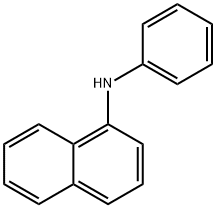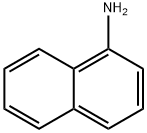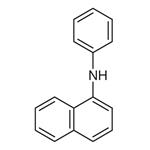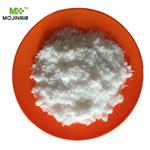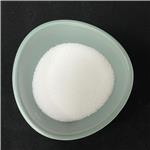Chemical Properties
brown solid
Uses
N-Phenyl-1-naphthylamine can be used as fluorescent probe for the determination of critical micelle concentration of surfactants. N-Phenyl-1-naphthylamine was used in a method for determination of the concentration of organolithium and organomagnesium reagents. N-Phenyl-1-naphthylamine was used as hydrophobic probe to study the phase transitions of membrane lipids in whole cells .
Definition
ChEBI: N-Phenyl-1-naphthylamine is a member of naphthalenes.
General Description
White to slightly yellowish prisms or reddish brown crystalline powder.
Air & Water Reactions
May be sensitive to prolonged exposure to air. Insoluble in water. Napthyl amines can be slowly hydrolyzed, releasing NH3 as a byproduct [N.L. Drake, Org. React. 1, (1942), 105].
Reactivity Profile
N-Phenyl-1-naphthylamine neutralizes acids in exothermic reactions to form salts plus water. May be incompatible with isocyanates, halogenated organics, peroxides, phenols (acidic), epoxides, anhydrides, and acid halides. Flammable gaseous hydrogen may be generated in combination with strong reducing agents, such as hydrides.
Health Hazard
ACUTE/CHRONIC HAZARDS: When heated to decomposition N-Phenyl-1-naphthylamine emits toxic fumes.
Fire Hazard
Flash point data for N-Phenyl-1-naphthylamine are not available. N-Phenyl-1-naphthylamine is probably combustible.
Biochem/physiol Actions
N-Phenyl-1-naphthylamine turns fluorescent after binding to hydrophobic regions of cell membranes.
Contact allergens
Phenyl-alpha-naphthylamine is contained in some rubbers
and oils as an antioxidant of the amine group. It is
closely related to phenyl-beta-naphthylamine and to
di-beta-naphthyl-p-phenylenediamine, but without
cross-reactivity.
Purification Methods
Crystallise it from EtOH, pet ether or *C6H6/EtOH. Dry it under vacuum in an Abderhalden pistol. [Beilstein 12 H 1224.]
